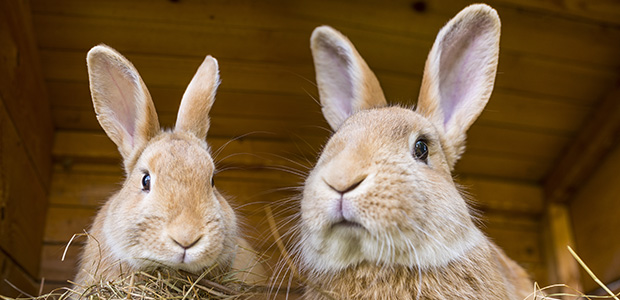How to litter train a rabbit: our guide to bunny toilet training
First Published: 24/01/2020
Last Updated: 17/10/2023
That said, there’s no reason why you can’t start your rabbit’s toilet training process as soon as you bring them home.
Let’s take a closer look at how to litter train a rabbit.
You will need:
So we know that age can be an important factor, but it’s not the most important.
Whether or not a rabbit is neutered will have a huge impact. An unneutered rabbit will be more territorial, and will mark their territory using scent – which means they’re a lot more likely to urinate in different areas of the house.
Most neutered rabbits, on the other hand, are likely to do their business in one consistent area of the house, usually in a corner.
Read more: Rabbit neutering: a guide to preventing rabbit reproduction.
Toilet training checklist
Before you commence with your bunny’s training, make sure you have:
- Organic litter (avoid cat litter as this can cause health problems to bunnies)
- A litter tray that’s easy for your rabbit to access
- Plenty of fresh hay and tasty treats

How to litter train a rabbit, step by step
- For the first few days of owning your rabbit, it’s a good idea to keep them in their cage, or at least in a small area that includes their food and their litter tray. Bunnies like to eat and go to the toilet at the same time, so having their food and litter tray close by will help.
- If your rabbit toilets outside of their litter tray, pick up their droppings and place them in the tray for a short while. It may sound nasty, but the smell will help them to associate their tray with their droppings.
- When your rabbit toilets in their tray, reward them with a tasty treat!
- As your bunny gets more familiar with using their tray, you can start giving them more room to explore. Neutered rabbits like to go to the toilet in the same place – once you have a good idea of where your bunny likes to go, you can keep their litter tray in that area.
- Keep a source of food, such as fresh grass or hay – which should make up at least 85% of your rabbit’s diet – close by.
Some useful things to remember
Neutered rabbits who’ve reached full maturity tend to learn toilet training easily and quickly – but accidents still happen. Never scold or shout at your bunny when toilet training; use positive reinforcement only.
If your bunny has an accident, avoid cleaning it up with bleach-based products. They contain ammonia, and so does urine – so your bunny will associate the clean area with going to the toilet even more!
If your bunny refuses to go to the toilet in their tray, or if you think you’re having too many accidents, have a chat with your vet.
Need more info?
For more help and advice on how to toilet train your bunny, problems with their toilet or eating habits or any other aspect of their health and welfare, have a chat with your local vet.
Find your nearest vet using our Find a Vet page, or speak to a vet online using Online Vets.


